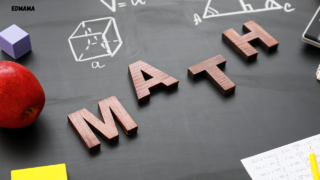
Course Content
A. Number Sense
-
A.01. Understand integers and their properties.
-
A.02. Represent integers on a number line.
-
A.03. Compare and order integers.
-
A.04. Understand and apply absolute value.
-
A.05. Solve word problems involving integers and absolute value.
-
A.06. Identify and classify real numbers (integers, rational, irrational).
-
A.07. Explore the concept of infinity and its implications.
B. Operations with Integers and Fractions
-
B.01. Add and subtract integers.
-
B.02. Multiply and divide integers.
-
B.03. Evaluate numerical expressions with integers.
-
B.04. Add and subtract fractions with like denominators.
-
B.05. Add and subtract fractions with unlike denominators.
-
B.06. Multiply and divide fractions.
-
B.07. Evaluate numerical expressions with fractions.
-
B.08. Solve real-world problems involving operations with integers and fractions.
-
B.09. Apply order of operations (PEMDAS/BODMAS) to complex expressions.
-
B.10. Understand and apply the commutative, associative, and distributive properties.
C. Rational Numbers and Operations
-
C.01. Define rational numbers and identify examples.
-
C.02. Convert between fractions, decimals, and percentages.
-
C.03. Compare and order rational numbers.
-
C.04. Add and subtract rational numbers.
-
C.05. Multiply and divide rational numbers.
-
C.06. Evaluate numerical expressions with rational numbers.
-
C.07. Solve real-world problems involving operations with rational numbers.
-
C.08. Understand and apply the concept of reciprocals.
-
C.09. Explore the density of rational numbers.
D. Exponents and Roots
-
D.01. Understand the meaning of exponents.
-
D.02. Evaluate expressions with exponents.
-
D.03. Apply the laws of exponents (product, quotient, power rules).
-
D.04. Understand and evaluate square roots.
-
D.05. Estimate square roots.
-
D.06. Solve equations involving exponents and square roots.
-
D.07. Work with powers of ten and scientific notation.
-
D.08. Explore cube roots and higher-order roots.
-
D.09. Understand and apply negative exponents.
E. Ratios, Rates, and Proportions
-
E.01. Understand the concept of ratios.
-
E.02. Write and simplify ratios.
-
E.03. Identify equivalent ratios.
-
E.04. Understand and calculate unit rates.
-
E.05. Solve proportions.
-
E.06. Apply proportions to solve real-world problems (e.g., scale drawings, unit conversion).
-
E.07. Understand and use ratio tables.
-
E.08. Solve complex proportion problems involving multiple steps.
F. Percents and Consumer Math
-
F.01. Convert between fractions, decimals, and percents.
-
F.02. Calculate percents of numbers.
-
F.03. Solve percent increase and decrease problems.
-
F.04. Apply percents to real-world problems (e.g., sales tax, discounts, simple interest).
-
F.05. Solve problems involving compound interest.
-
F.06. Analyze and interpret data presented as percentages.
-
F.07. Understand and calculate commission and tips.
G. Measurement and Geometry
-
G.01. Understand and convert units of measurement (metric and customary).
-
G.02. Calculate perimeter and area of common shapes.
-
G.03. Calculate the circumference and area of circles.
-
G.04. Calculate volume of rectangular prisms and cubes.
-
G.05. Calculate surface area of prisms and cylinders.
-
G.06. Understand and apply concepts of precision and accuracy in measurement.
-
G.07. Explore the relationship between area and perimeter.
H. Two-Dimensional Figures
-
H.01. Identify and classify polygons (triangles, quadrilaterals).
-
H.02. Understand triangle properties (angle sum, types of triangles).
-
H.03. Understand quadrilateral properties (parallelograms, rectangles, squares, trapezoids).
-
H.04. Find missing angles in triangles and quadrilaterals.
-
H.05. Work with angles formed by transversals intersecting parallel lines.
-
H.06. Understand and apply congruence and similarity in geometric figures.
I. Transformations
-
I.01. Identify and describe translations, reflections, and rotations.
-
I.02. Perform transformations on the coordinate plane.
-
I.03. Understand and apply compositions of transformations.
-
I.04. Determine congruence using transformations.
-
I.05. Understand dilations and their effects on figures.
J. The Pythagorean Theorem
-
J.01. State and apply the Pythagorean Theorem.
-
J.02. Use the Pythagorean Theorem to find missing side lengths in right triangles.
-
J.03. Solve real-world problems using the Pythagorean Theorem.
-
J.04. Understand and apply the converse of the Pythagorean Theorem.
K. Three-Dimensional Figures
-
K.01. Identify and describe three-dimensional figures.
-
K.02. Draw nets of three-dimensional figures.
-
K.03. Calculate the volume and surface area of three-dimensional figures.
-
K.04. Understand the relationship between similar three-dimensional figures.
L. Data Analysis and Probability
-
L.01. Interpret and create various types of graphs (bar, line, circle, scatter plots).
-
L.02. Calculate mean, median, mode, and range.
-
L.03. Understand and calculate probability of simple events.
-
L.04. Understand and calculate probability of compound events.
-
L.05. Analyze data sets to identify trends and make predictions.
-
L.06. Understand and differentiate between different types of samples (random, biased).
M. Algebraic Expressions and Equations
-
M.01. Write and evaluate algebraic expressions.
-
M.02. Simplify algebraic expressions using properties of operations.
-
M.03. Solve one-step equations.
-
M.04. Solve two-step equations.
-
M.05. Solve multi-step equations.
-
M.06. Solve equations with variables on both sides.
-
M.07. Solve and graph one-variable inequalities.
N. Linear Functions
-
N.01. Identify and represent linear functions using tables, graphs, and equations.
-
N.02. Determine the rate of change (slope) of a linear function.
-
N.03. Interpret the meaning of slope and y-intercept in context.
-
N.04. Write linear equations from tables and graphs.
-
N.05. Solve real-world problems involving linear functions.